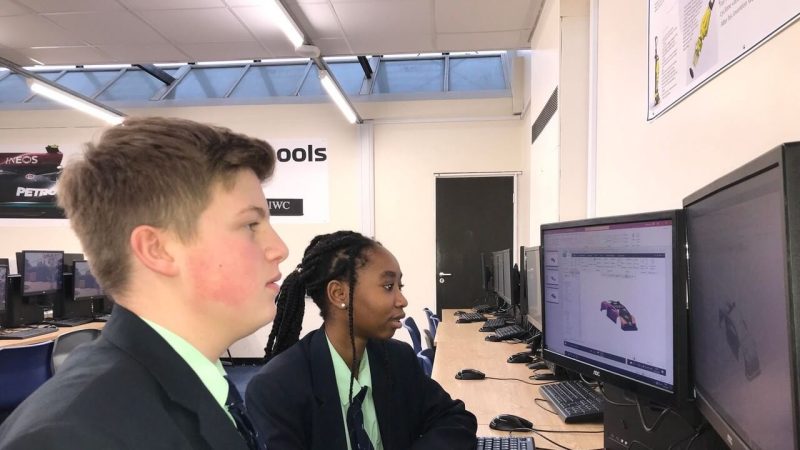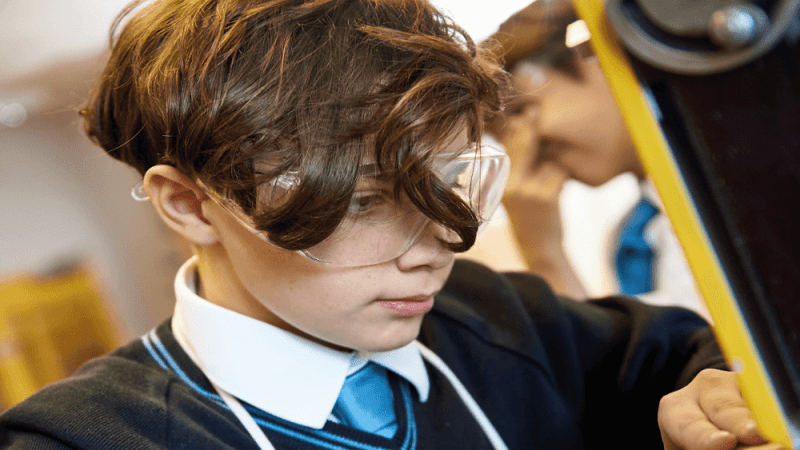Take a deep dive into D&T

Under the revised framework, inspectors will be focusing in on specific subjects – so Joanna Marshall has been investigating what that might look like for hers…

‘Deep Dives’ are clearly going to be a feature of inspections under the revised framework.
Intrigued to know what this might mean for design and technology, I asked middle leaders to share some of their experiences of a recent Ofsted inspection – and here are some key points that I picked up.
Reading for learning
One middle leader was asked about how reading is incorporated into D&T lessons. It is vital that any material read in lessons is appropriate and relevant to the exercise or practical activity that students are completing.
During one of my year 7 lessons, for example, students were learning how to tie dye, so we read about the differences between natural and chemical dyes and the processes of dying fabric in industry such as batch and commercial dying.
This information could then determine particular homework tasks, such as a series of GCSE exam style questions about dying techniques.
Curriculum flexibility
Creative subjects have definitely felt the squeeze since the EBacc was introduced, with some schools or academies offering D&T lessons once a week in KS3, or using a rotation system where students will have just a few months or weeks of learning a creative subject before moving onto another.
According to my research, positive feedback has been given to D&T middle leaders who deliver a wide variety of skills and rich knowledge within their curriculum, so that by the end of KS3 students have developed skills in electronics, textiles and computer aided design, and can demonstrate an in depth knowledge of plastics, timbers and ecological and social issues.
Many middle leaders were asked to explain the ‘journey’ of topics, identifying a starting point and end point and whether the inbetween is carefully sequenced to ensure that all learners are able to achieve the latter.
Sequenced content
Sequencing was another common theme on which many middle leaders were questioned by inspectors. This can be shown in many different ways within D&T; essentially, when writing schemes of work each lesson should be planned to build on knowledge and skills learned in previous lessons or topics.
Trending
For example, a year 10 class of mine have completed a topic on ‘timbers’. We start by reading and learning about hardwoods, softwoods, boards and environmental impact, whereas practical work includes wood joints, shaping techniques and wood finishes.
By the end, students are able to make a range of different wood joints but can also apply knowledge of what types of wood joints and finishes are used for different types of products and purposes.
Purposeful homework
Be prepared to talk through homework, too: are you setting purposeful tasks that consolidate learning?
For the ‘timbers’ topic, I asked my year 10s to write a couple of paragraphs on “Oak Furniture Land products do not display the FSC symbol. What might this suggest?”; not only did this enable the students to think independently and use key vocabulary, it also opened a discussion for the following lesson about deforestation, biodiversity and environmental impact.
Ultimately, successful feedback from inspectors was given to middle leaders where schemes of work demonstrated a clear journey, where students could retain and articulate knowledge and demonstrate skills learnt in the first lesson of the topic until right at the end of it, and where students could articulate the key concepts of the topic they were learning and why they were important.
Low-stakes testing and recall activities can be used to embed key concepts into students’ long term memory.
Joanna Marshall is subject leader for Design and Technology at The Lancaster Academy, Leicester. Read advice for preparing for PE deep dive questions.











